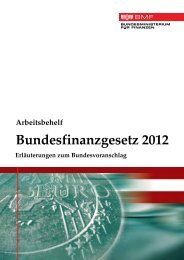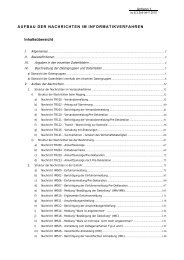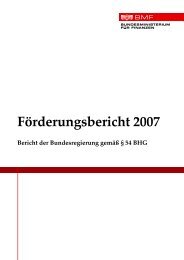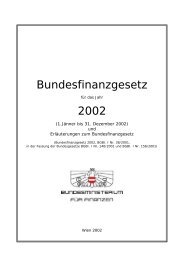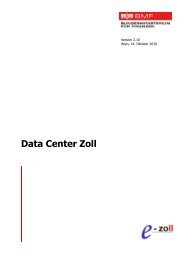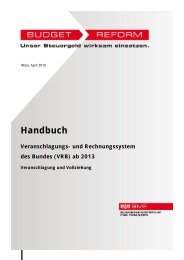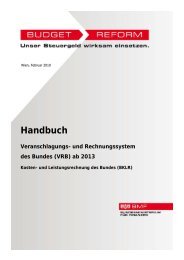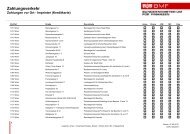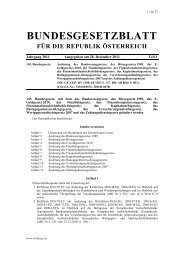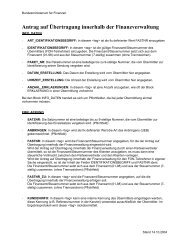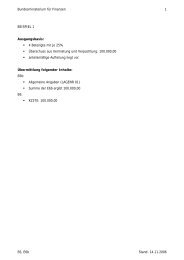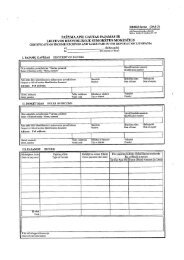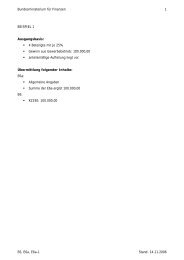Fallback and Recovery Specification (FRS)
Fallback and Recovery Specification (FRS)
Fallback and Recovery Specification (FRS)
Create successful ePaper yourself
Turn your PDF publications into a flip-book with our unique Google optimized e-Paper software.
DG TAXUD – EXCISE COMPUTERISATION PROJECT REF: ECP2-FITSDEV2-SC03-<strong>FRS</strong><br />
FALLBACK AND RECOVERY SPECIFICATION (<strong>FRS</strong>) VERSION: 3.11-EN<br />
Exceptions typology<br />
3.1.1.2 Loss of information to be exchanged<br />
For some reason, the addressee never receives the contents of an information exchange. If<br />
this is the case, different situations must be considered:<br />
1. The lost information was expected.<br />
The addressee expects to receive certain information within a given time limit, <strong>and</strong> this<br />
information is lost: this is typically the case if information is exchanged in response to<br />
another information exchange.<br />
For example, if the report of receipt of an e-AAD does not arrive in due time. Most<br />
generally, but not always, such missing information is automatically detected through<br />
a timer or equivalent mechanism.<br />
2. A response to the lost information was expected.<br />
If the lost information was not expected from the addressee, but the sender expects to<br />
receive a specific response to this information exchange within a certain delay. This<br />
situation is similar to the situation described in the example above, except that, in this<br />
case, it is the initial information exchange that is lost (in this example: the e-AAD<br />
never reached the consignee), instead of its response; that is to say that the e-AAD<br />
itself is lost.<br />
The result will be the same: the consignor will not receive the expected report of<br />
receipt.<br />
3. The lost information was not expected.<br />
If the lost information was not expected from the addressee, <strong>and</strong> the sender does not<br />
expect to receive a specific response to this information exchange, the exception<br />
remains undetected until the lost information becomes needed.<br />
3.1.2 Exceptions at semantic level<br />
Several defects are capable of making it impossible for the receiver of an information<br />
exchange to underst<strong>and</strong> the business signification of the received information; typically:<br />
� the message refers to an object that is not known to the receiver;<br />
� the content of the received information is not consistent with already known<br />
information (e.g. a report of receipt is received from an economic operator who is not<br />
the consignee of the e-AAD).<br />
3.1.2.1 Unknown object<br />
The typical case of unknown object is where a received information exchange refers to an<br />
ARC that is not known to the receiver. This results from a preceding error (the e-AAD<br />
did not reach the receiver), from a mistake (wrong ARC has been input) or from a fraud<br />
(use of a forged ARC).<br />
Similar cases are where a complementary submission of a control report or of an event<br />
report refers to a non-existent report identifier or where a response to a request refers to a<br />
non-existent correlation id.<br />
ECP2-FITSDEV2-SC03-<strong>FRS</strong>v3.11.doc Page 21 of 53



